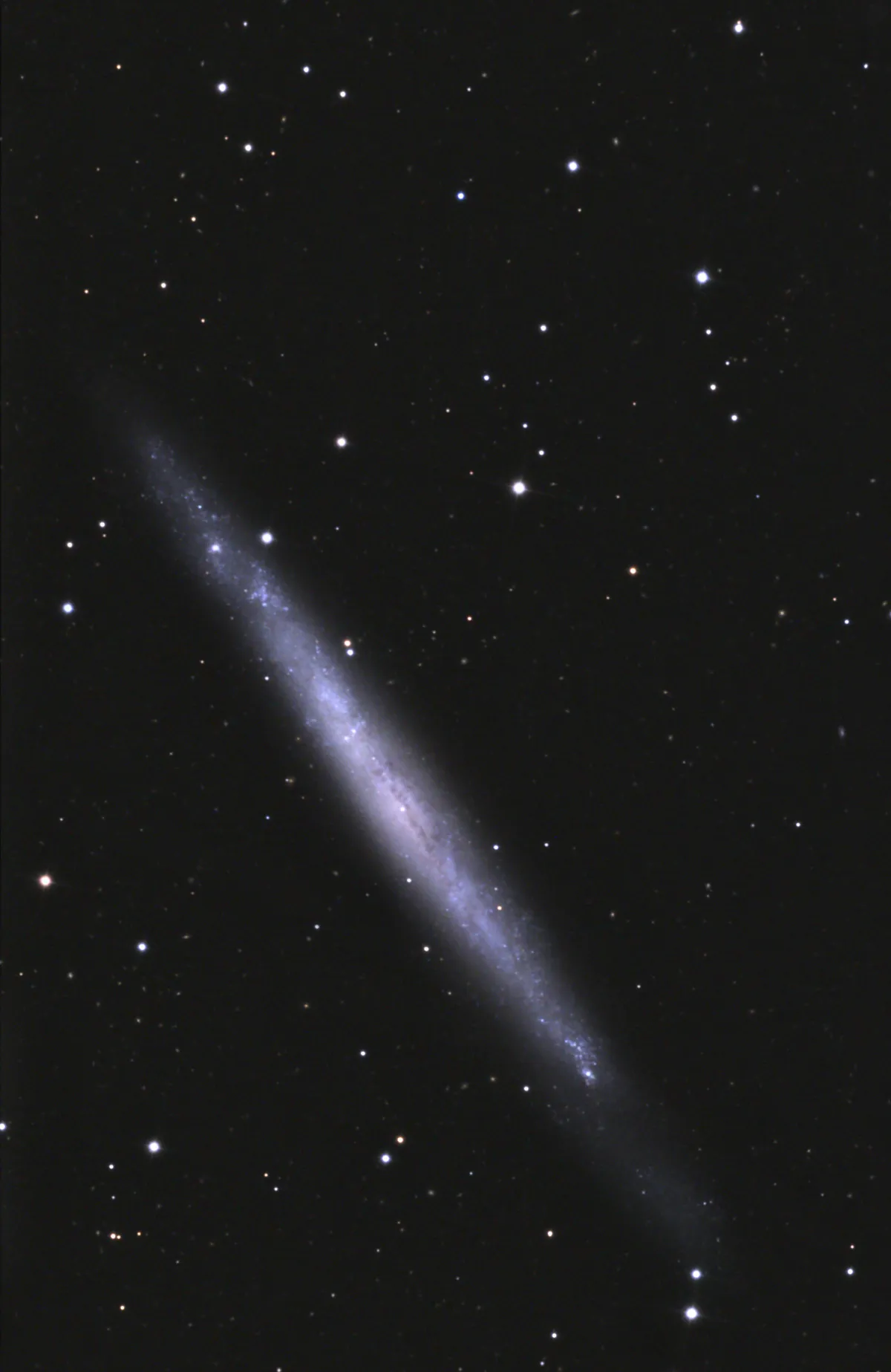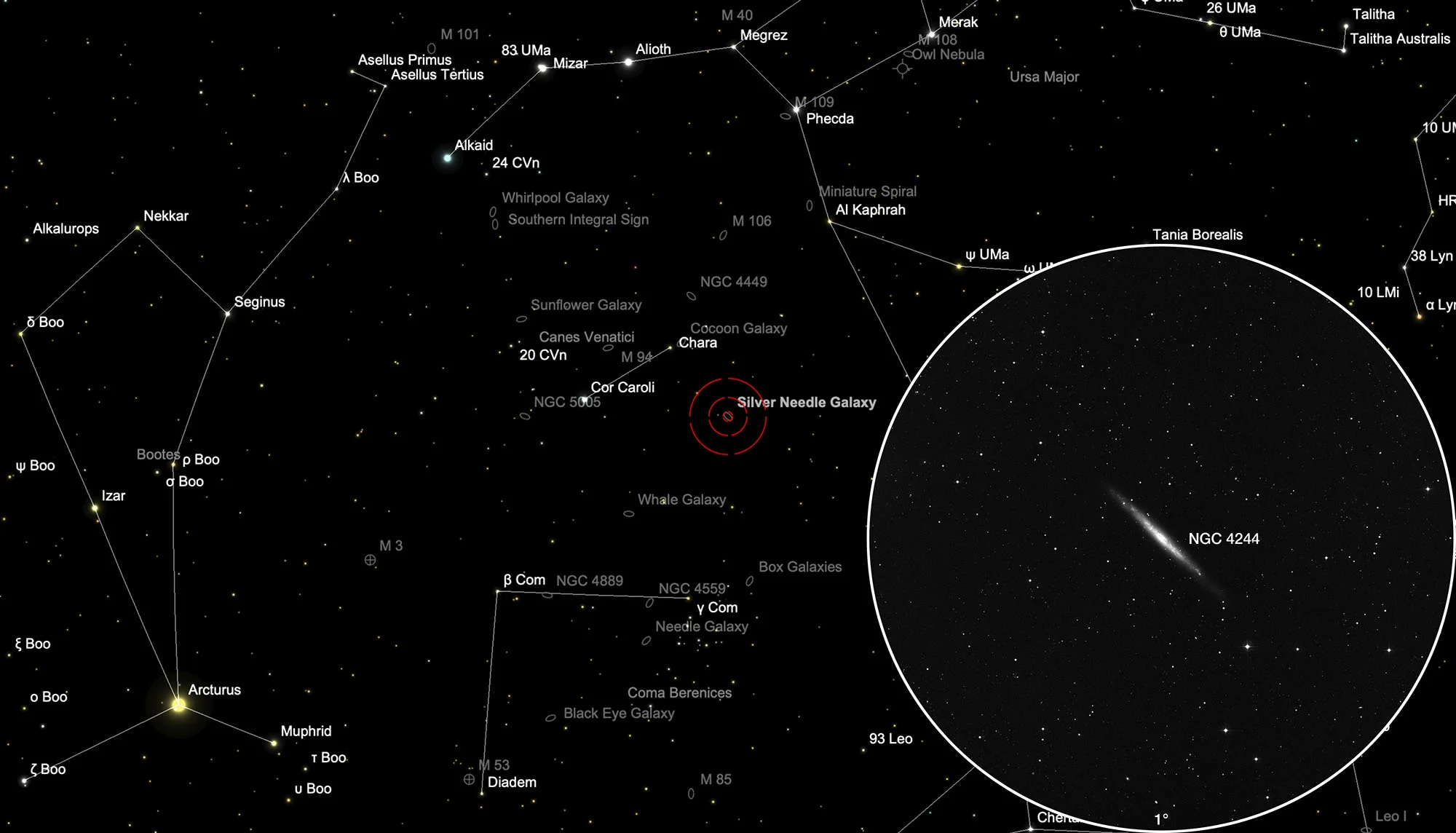Silver Needle Galaxy (NGC 4244)

Object Description
The galaxy NGC 4244 was discovered on 17 March 1787 by the German-British astronomer Friedrich Wilhelm (William) Herschel with his 18.7 inch reflecting telescope. [277] This is a spiral galaxy, which we are looking at directly on the edge. It is at a distance of about 3.1 to 5.7 Mpc (10 to 18 million light years). [145] It belongs to the Canes Venatici I galaxy group, which also includes M 94, which is a subgroup of the Virgo galaxy cluster.
| Designation | NGC 4244 |
| Type | Gx (Sc) |
| Right Ascension (J2000.0) | 12h 17m 29.9s |
| Declination (J2000.0) | +37° 48' 28" |
| Diameter | 16.6 × 1.9 arcmin |
| Photographic (blue) magnitude | 10.9 mag |
| Visual magnitude | 10.4 mag |
| Surface brightness | 14.0 mag·arcmin-2 |
| Position Angle | 48° |
| Redshift (z) | 0.000815 |
| Distance derived from z | 3.44 Mpc |
| Metric Distance | 4.630 Mpc |
| Dreyer Description | pB, vL, eE 43°, vgbM |
| Identification, Remarks | WH V 41; h 1167; GC 2831; UGC 7322; MCG 6-27-45; CGCG 187-35; FGC 1402; IRAS 12150+3804 |
Finder Chart
The galaxy NGC 4244 is located in the constellation Canes Venatici. The best time to view this circumpolar constellation is December to August, when it is highest at night.
